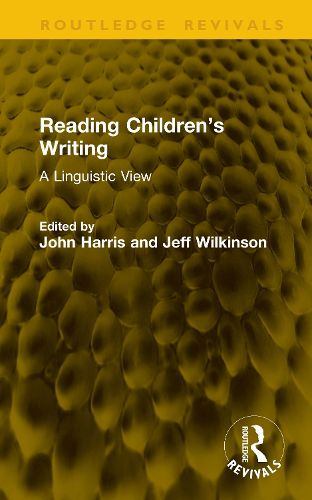Readings Newsletter
Become a Readings Member to make your shopping experience even easier.
Sign in or sign up for free!
You’re not far away from qualifying for FREE standard shipping within Australia
You’ve qualified for FREE standard shipping within Australia
The cart is loading…






While many books of the time explored pedagogical, psychological, and linguistics perspectives of children's writing, Reading Children's Writing (originally published in 1986) takes a fresh and innovative approach by examining text-organizational methods of analysis.
The book considers 'whole texts' produced by children of either top junior or lower secondary age-a time of transition which involves them in significant changes of writing styles. Here the authors consider the organizational features of narrative and non-narrative writing; the use of vocabulary; and the evaluation of children's work.
The volume provides a useful and interesting insight into the methods of describing, evaluating, and developing children's writing ability. It will be a beneficial read for teachers at primary and secondary level, and for linguists concerned with language in education.
$9.00 standard shipping within Australia
FREE standard shipping within Australia for orders over $100.00
Express & International shipping calculated at checkout
Stock availability can be subject to change without notice. We recommend calling the shop or contacting our online team to check availability of low stock items. Please see our Shopping Online page for more details.
While many books of the time explored pedagogical, psychological, and linguistics perspectives of children's writing, Reading Children's Writing (originally published in 1986) takes a fresh and innovative approach by examining text-organizational methods of analysis.
The book considers 'whole texts' produced by children of either top junior or lower secondary age-a time of transition which involves them in significant changes of writing styles. Here the authors consider the organizational features of narrative and non-narrative writing; the use of vocabulary; and the evaluation of children's work.
The volume provides a useful and interesting insight into the methods of describing, evaluating, and developing children's writing ability. It will be a beneficial read for teachers at primary and secondary level, and for linguists concerned with language in education.